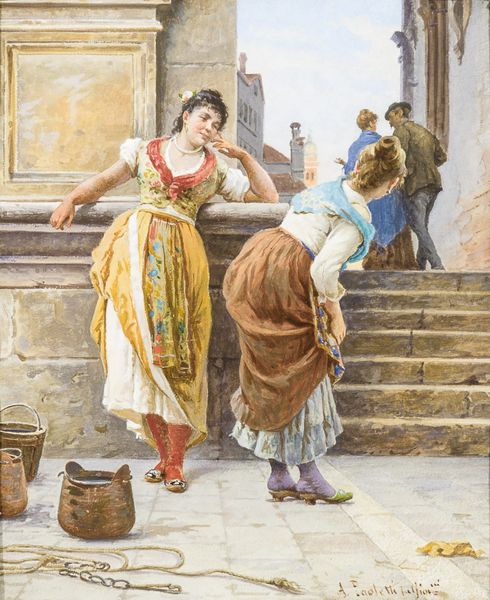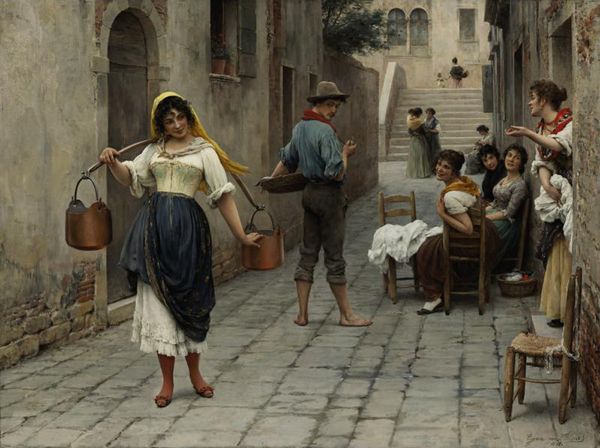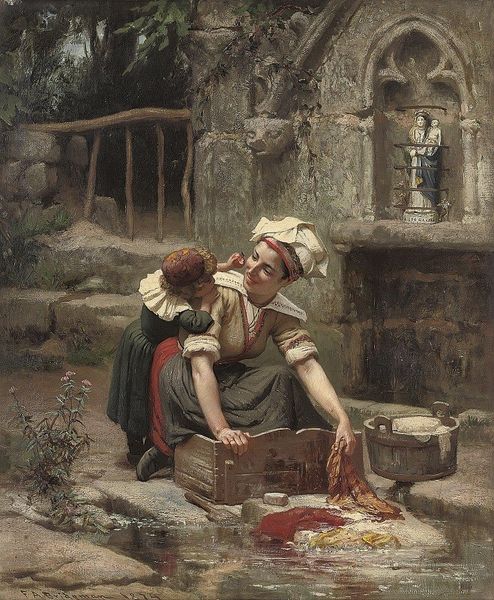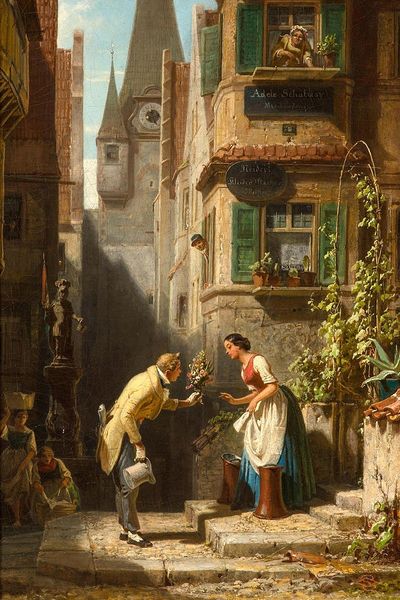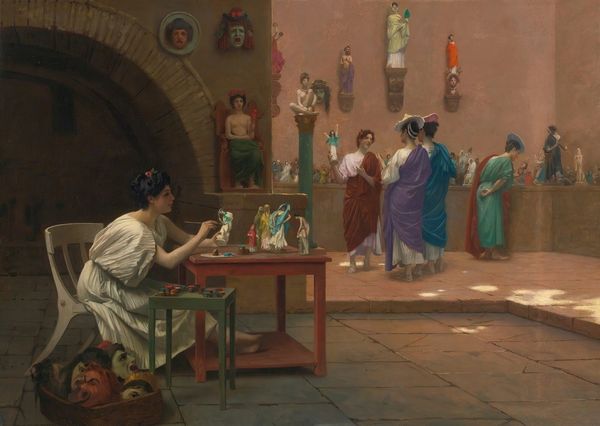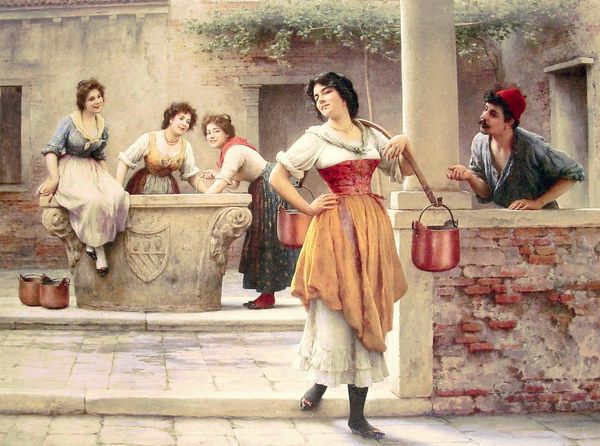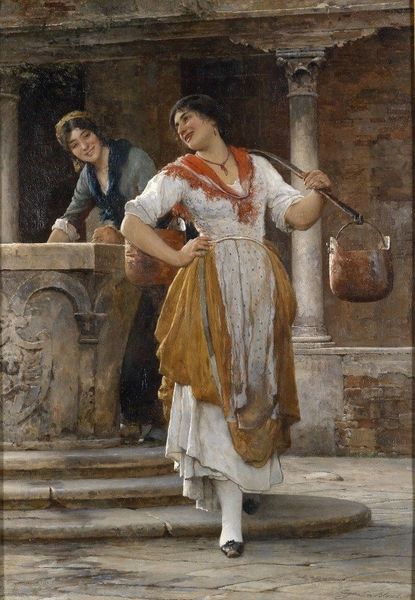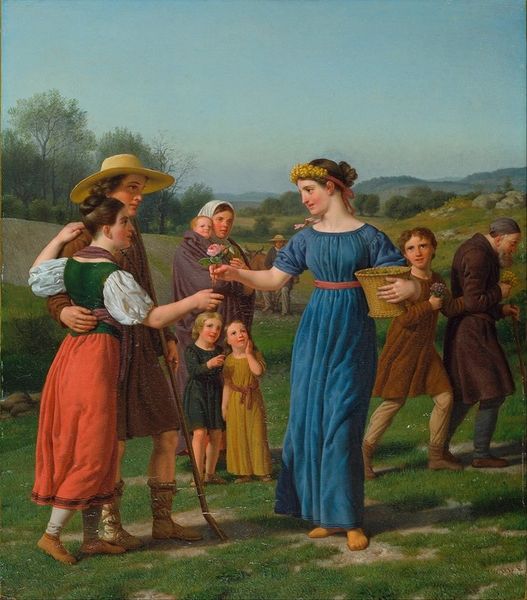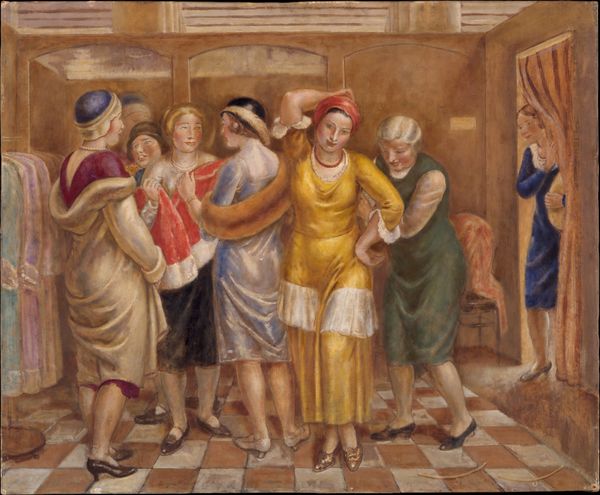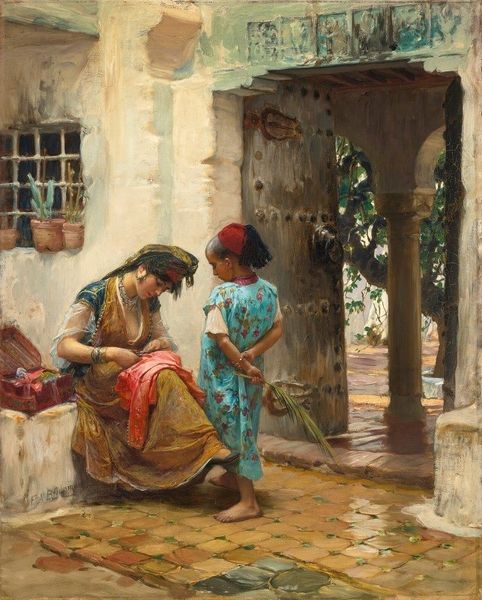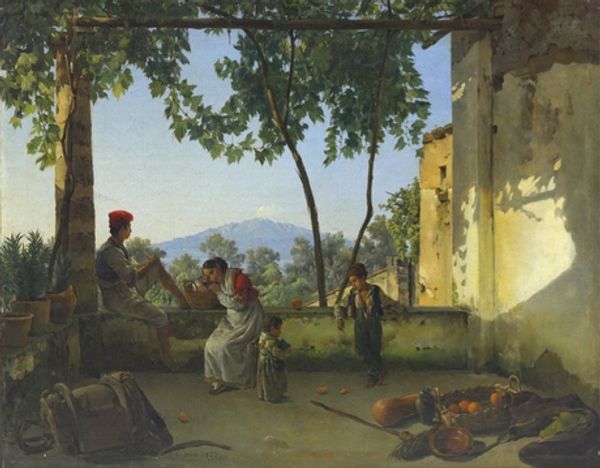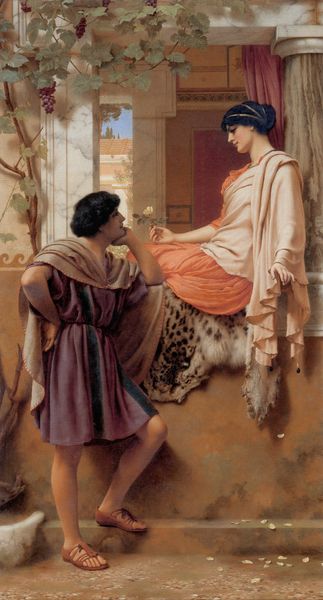
Copyright: Public Domain: Artvee
Eugen von Blaas, an Austrian painter known for his idealized genre scenes, likely painted this oil on canvas in the late 19th century. At first glance, "No Love Without Envy" captures a seemingly innocent moment of flirtation near a well, yet the gazes exchanged reflect a complex interplay of desire, class, and social norms. Set against the backdrop of what appears to be Venice, Italy, the painting hints at the socio-economic dynamics between the working class and the artist's own bourgeois perspective. We see a young man, likely a laborer, captivated by a woman carrying fruit. Meanwhile, a group of women observe with expressions tinged with curiosity. Are their expressions conveying simple curiosity, or a deeper sense of longing? Von Blaas romanticizes the working class, casting them in a narrative of idealized beauty and simple pleasures. The painting, therefore, becomes a window into the artist's own world, reflecting the male gaze and the politics of representation inherent in genre painting.
Comments
No comments
Be the first to comment and join the conversation on the ultimate creative platform.
